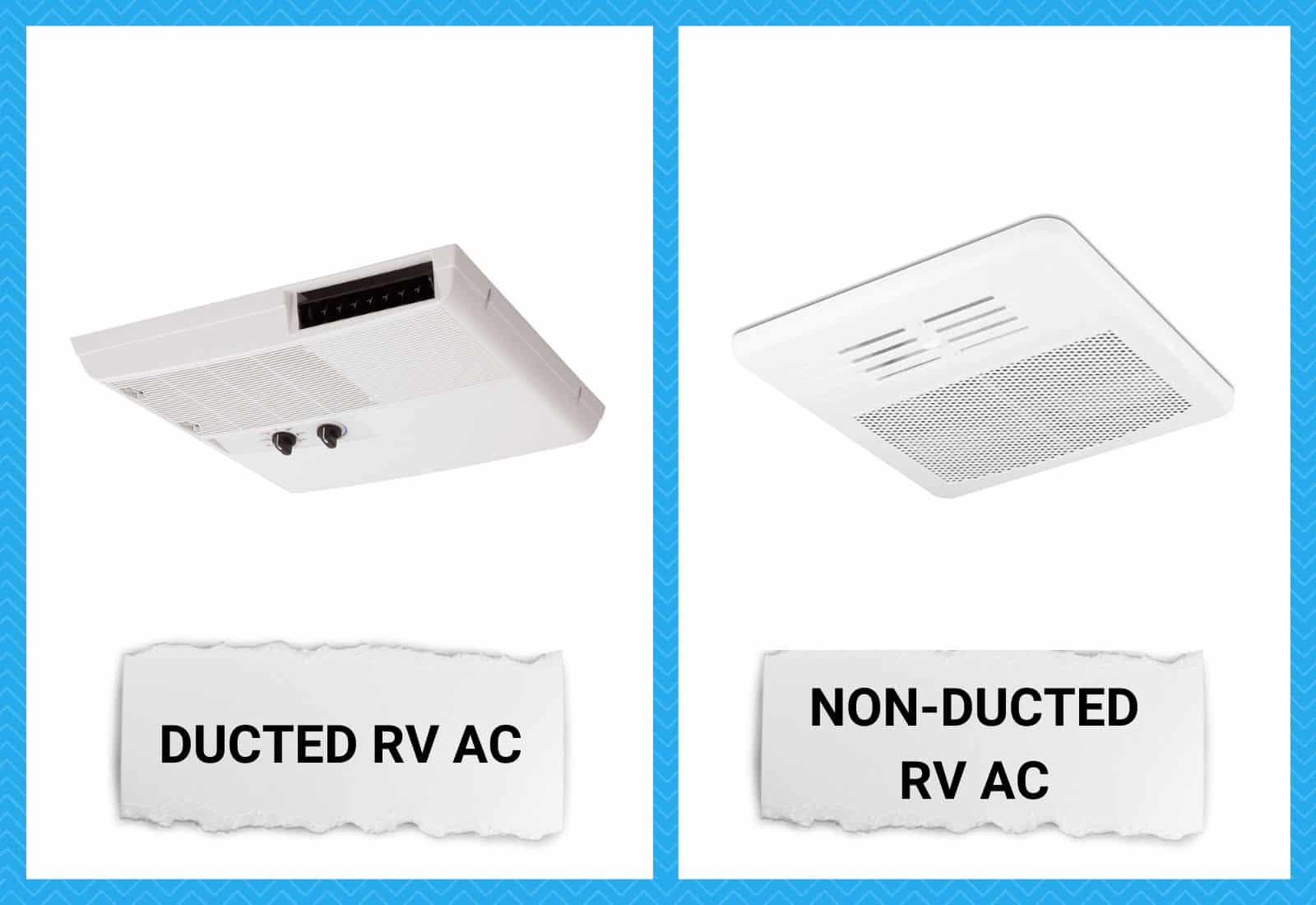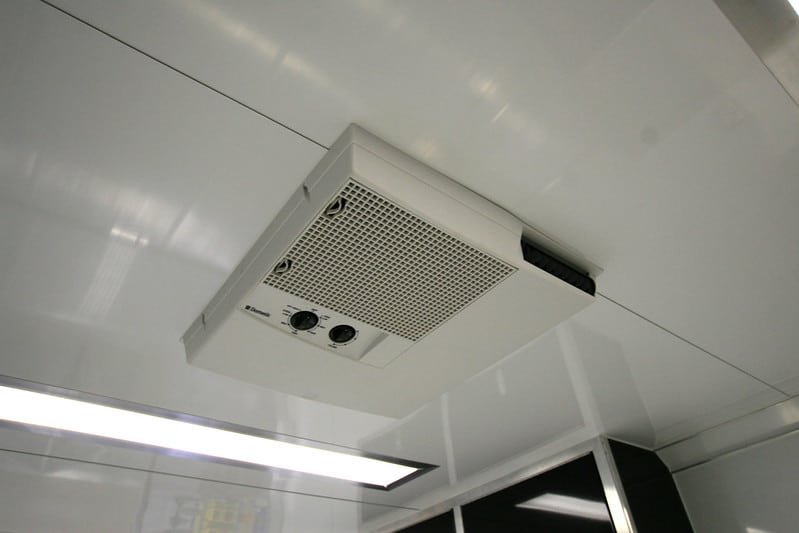
Have you ever experienced one of those days when everything seems to take forever because it’s too hot and humid? Heat can be a killer in your clothes. But no worries, as technology, has advanced quickly, and an air conditioner (AC) can help with that!
AC is indeed a life-saving device. This gadget has the marvel to not only cool down your body but also your mind.
Most RV owners use air conditioners (AC) to keep themselves comfortable. AC can significantly enhance indoor air quality and produce a healthier environment. It is usual for RV owners to have the mental fatigue that comes with a day that is too hot.
Prolonged exposure to extreme heat might result in dehydration and heat stroke. Air conditioning can improve their comfort, allowing them to focus on their tour throughout the day. Indeed, it helps them to have a peaceful sleep at night in their RV.
Most of the RVs have an AC, but the type of AC it has is very crucial. The right kind of conditioner can make your life easier in RV. It will maintain not only your RV’s temperature but also your maintenance cost.
You need to be aware of the two types of AC. This article will inform you about both of them.
Ducted vs. Non-Ducted RV AC
Here’s a table that will assist you to select ducted or non-ducted Air Conditioner (AC) for your RV:
RV AC: Non-Ducted
A Non-ducted recreational vehicle AC is based on a system that only blows the air from a vent. It does not need any duct to operate in your RV. It contains a box since it is where the cooling comes from.
Non-ducted air conditioners are relatively simple to install. In compact RVs, a non-ducted air conditioner would be sufficient. At the same time, any RV with more than one room should have a ducted system.
You must use a non-ducted air conditioner if you are renovating an old RV that does not have an air conditioner. Because of its ease of installation, this type of AC is also excellent for vehicle conversions.
The non-ducted system is not required to match up with existing duct pipes. The main difficulty here would be ensuring that all the wiring and other connections are successfully aligned.
Uneven Air Distribution
As there are no multiple ducts in this system, you will not have an even air distribution and may end up with hot and cold areas throughout your RV. This will, of course, be determined by the size of your RV, the age of the AC unit, and other factors.
But some non-ducted AC can keep the duct towards your targeted area. For example, if you want the cooling in your bedroom, move its vent towards it.
Another factor to consider is that a ductless air conditioner raises the humidity level inside the vehicle, creating a moisture environment inside the RV. So, if you choose a ductless AC, air out and clean the kitchen and bathroom regularly to keep humidity under control.
Cleaning your RV will also save your AC from getting any dust particles or mud into it. As you might be traveling from different types of areas, your RV may get polluted or dusted. The dust particles can decrease the efficiency of your AC.
It is also proven o and tested that non-ducted AC catches less dust, so if you have a dust allergy, this Ac is the best fit for you! But still, make sure to clean the AC system every week.
Fixing a Box
If your RV lacks a ducting system, you should opt for a non-ducted AC because you must only set a box in a non-ducted system. The box extends a few inches from the RV’s ceiling. As a result, headroom is lowered, which may be an issue for taller persons.
A ducted air conditioner matches your RV’s duct design to distribute air uniformly on a bigger scale. The vent included in the non-ducted air conditioning system does not preferably match your RV’s interior design, making them appropriate for replacement.
Even if it does, one replacement in your RV won’t matter as much as changing multiple ducts in a ducted AC system.
Because the fans are too close to the vents, non-ducted air conditioners are louder than ducted models. If you are more concerned with repair or replacement expenses than AC cooling, a ductless system could be the way to get rid of them.
But that does not mean that you can neglect its maintenance. Because you are dependent on one duct only, it needs proper maintenance to enjoy cold air and have a peaceful life in your RV.
RV AC: Ducted
A Ducted recreational vehicle AC is based on a system that blows the air from its multiple ducts throughout the RV. It consists of more than one duct to operate in your RV.
All vents are connected through ducting pipes. Ducted air conditioners are relatively difficult to install. In large RVs, a ducted air conditioner would be more efficient. At the same time, most RVs with only one room already have a duct system installed in them.
Even Air Distribution
As there are multiple ducts in this system, you will enjoy an even air distribution in all the areas throughout your RV.
This system is, of course, not dependent on the size of your RV. So you can enjoy the same cooling from the bedroom to the living room. But it also authorizes you to turn on and off each duct wherever you want to direct the air or not.
A ducted air conditioner matches your RV’s duct design to distribute air uniformly on a bigger scale. The vents in ducted air conditioning units are modest, making them appropriate for simplistic interior designs.
The ducted AC RV maintains an aesthetic design in its interior because it will not be seen extended from the ceiling.
The ducted system needs proper maintenance. But it has a plus point: you’re not dependent on one duct only, so even if one of them stops working, you can enjoy cooling from the others. But make sure to get it repaired as soon as possible.
Quiter, More Efficient
A ducted air conditioner appears to be quieter than non-ducted systems. To maintain the operation as soft as possible, these versions have operating parts positioned either in the ceiling or outside the RV.
Also, the force of air is reduced due to multiple vent distribution. The ducted AC system becomes quieter when the central unit’s outlet vents are closed. This feature distinguishes it from a non-ducted AC.
If you are renovating an old RV with a ducted AC, it would be challenging to operate with it. Because of its complicated installation, this AC type is unsuitable for vehicle conversions. The ducted system requires it to match up with existing duct pipes.
The main difficulty here would be ensuring that all duct pipes match. The wiring and other connections need to be appropriately aligned.
A ducted air conditioner costs more to install than a non-ducted air conditioner since experts must work on the roof to secure the ductwork. Pay close attention to the duct connections because poor setup will result in limited airflow.
Adding a ducted AC unit may be less expensive if your RV has an installed duct system. If you’re mostly on budget and can’t invest more in your RV AC maintenance, you should think twice before getting a ducted AC fit for your RV.
Wrapping It Up
When it comes to creating cool air and fan speeds, the two systems are pretty similar. It does not matter which type of AC you prefer, as it varies from person to person.
Depending upon many factors such as RV size, Unit costs, and maintenance or repairment costs, many people choose AC for their RV. It is wise not to look at others. Get something for your RV, and do what is more suitable for you.




Thank you for writing this post, it is really useful for RV beginners like me.